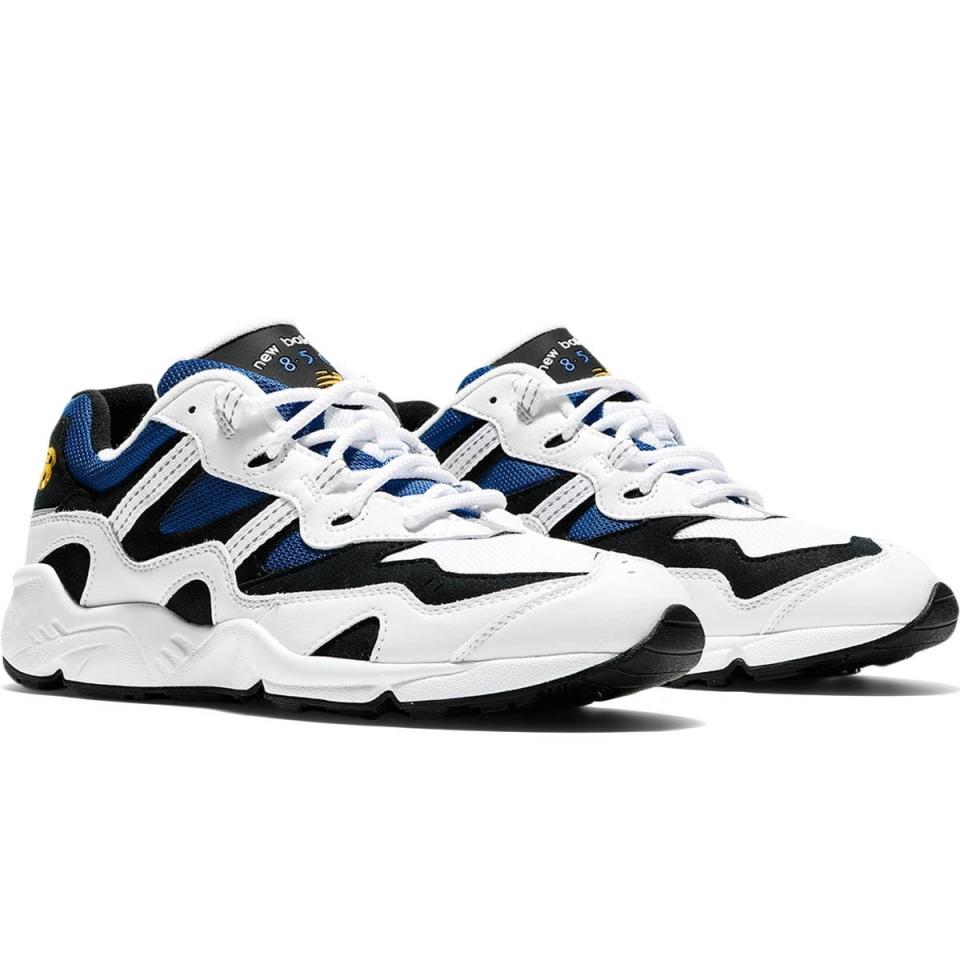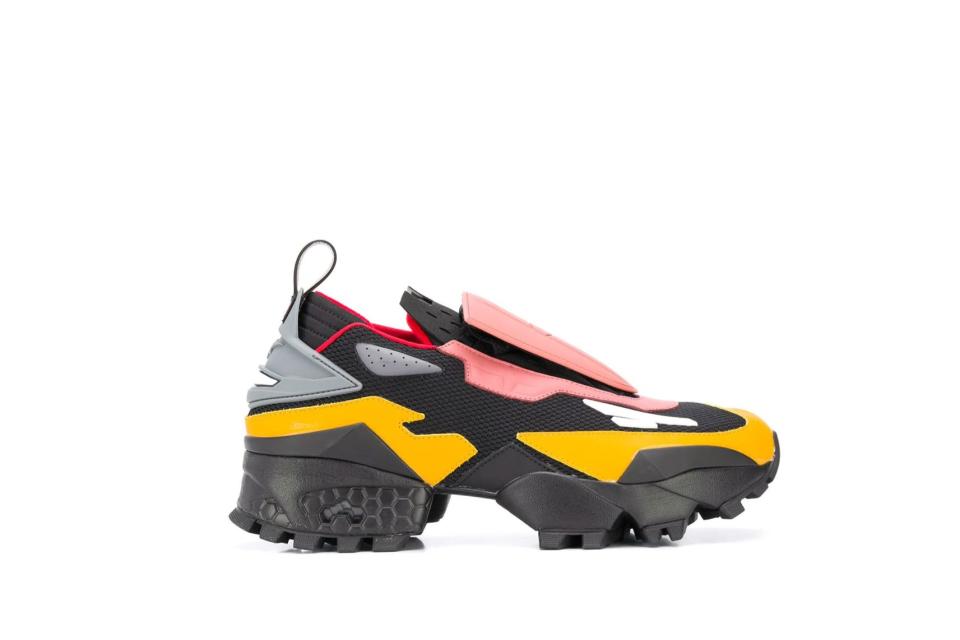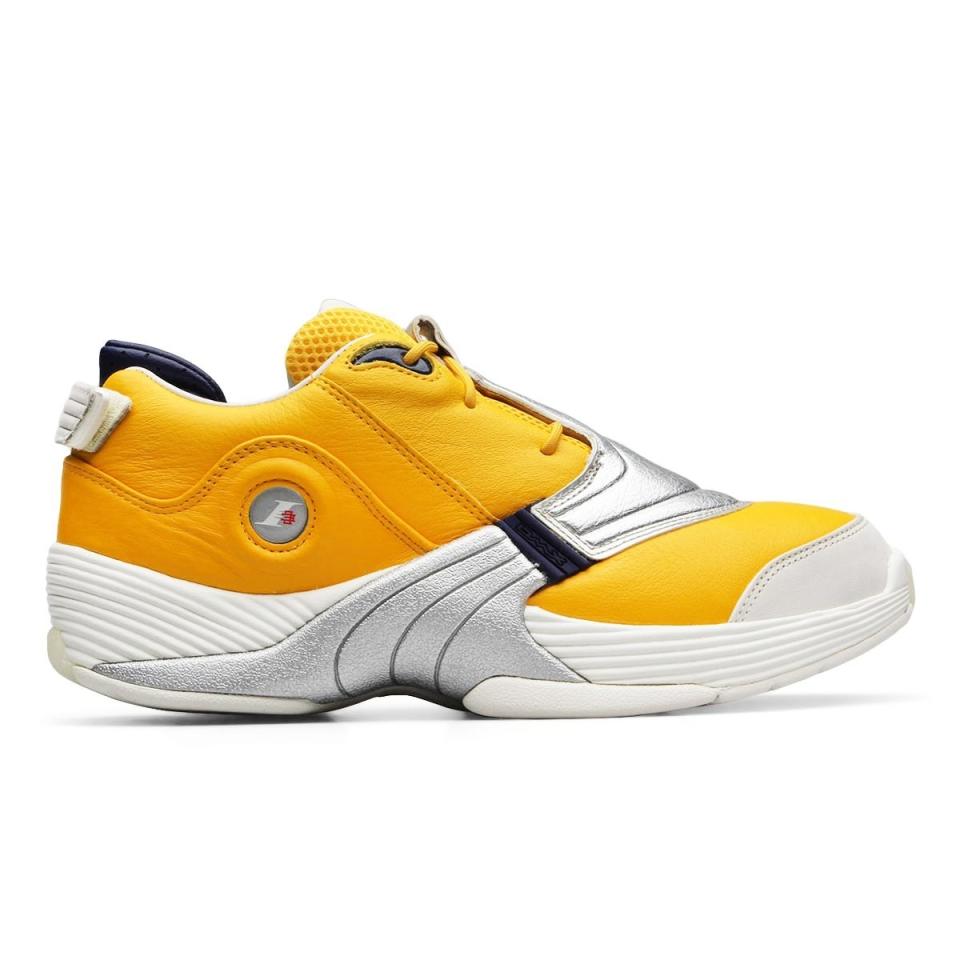The Sneaker World's B Division Had an A-Plus Year
To say that Nike and Adidas are the two biggest sneaker brands on the planet might even be an understatement: they boast recent valuations of approximately $32.4 billion and $16.7 billion, respectively. Perhaps even more importantly, these two giants have led what we now know as sneaker culture, consistently putting out sneakers that get enthusiasts’ mouths watering and wallets opening. Even in 2019, Nike and Adidas have been the among industry’s most consistent sources of fire footwear, with styles like the Nike x Cactus Plant Flea Market VaporMax, Sacai x Nike LDWaffle, and Adidas Yeezy all remaining on the hype charts. But in 2019, three labels that have been playing second fiddle to the Swoosh and the three stripes for decades—New Balance, Asics, and Reebok—managed to take center stage, if only briefly. As such, the sneaker world feels much like the new-look NBA. Parity is back, baby!
By focusing on silhouettes from their archives, they’re able to take more shots than Nike and Adidas—and it just so happens that they’ve been hitting their targets more than in years past. Here’s how each of these labels made the most of their releases this year, and why this year stands out as the B-tier’s best in a long time.
New Balance: Don’t Fix What Isn’t Broken
Notable Collaborations: Aimé Leon Dore, Engineered Garments, Junya Watanabe, No Vacancy Inn, Aries
Perhaps no other brand benefitted from the rise of the dad sneaker over the past few years more than New Balance: the brand basically invented them. Its 990 style, in particular, straddles the line between high-fashion staple and regular-dude favorite. (A viral ad for the shoe released earlier this year put the V5 on a white background with the accompanying text “Worn by supermodels in London and dads in Ohio.”) The 990, in its many iterations, from the v2 to the brand new v5, and even the 991—a shoe released in 2001 that’s technically in the 990 lineage—have each had their moment in the sun this year.

The 990v2 got a tasteful, upstate New York-inspired color scheme upgrade via downtown label Aimé Leon Dore. The v3 was remixed by roaming DJ/designer crew (and GQ Best New Menswear Designers in America) No Vacancy Inn. And the v5—in addition to collaborations with Japanese labels Beams, Junya Watanabe, and Engineered Garments—became the brand’s latest mass-market hit. In all of these cases, the formula was essentially the same: Take an iconic New Balance style, do it up in some unique colors, add some upgraded materials, and artfully place a beloved designers’ logo on the heel. In the case of the v5, the collaboration wave crested so often, and bearing so many good versions, that sneakerheads seemingly forgot they hated the shoe when it first was announced in April. Whether that’s a testament to the halo effect of collaborations or simply that sneakerheads, despite their love of newness, hate when iconic sneakers get changed is anyone’s guess.

New Balance even took the time for a heat check when it brought back a style that few knew existed: the 850. When it first released in 1996, it was actually the first New Balance sneaker not to feature a big “N” on the side. This unique design feature and retro ‘90s look gave the re-release some legs—especially in the wake of the collaborations that came before it. The fact that it dropped simply as a New Balance brand product with no collaboration attached, and still sold out with the quickness, speaks to how on fire NB is at the moment.
Reebok: Shooting Sleeves and Sustainability
Notable Collaborations: Pyer Moss, Vetements, Eric Emmanuel, Palace, JJJJound
Reebok is technically owned by Adidas, but the companies operate almost entirely separately, with Reebok based in Canton, Massachusetts and Adidas in Germany. (You wouldn’t say that watching Monday Night Football means you’re tuning into a Disney show, right?) And this year, Reebok capitalized on three different fronts—avant-garde collaborations, retro basketball sneakers, and their minimalist favorite lineup of Classics.
Reebok has never been a company that’s been afraid to get weird with it (remember, they literally made a shoe that you inflate via the tongue back in the 1980s—and people loved it). In that spirit, Reebok dropped new collaborations with Vetements (a colorful mesh early-aughts running style that came in both metal spike-adorned and non-metal spike-adorned styles) and Pyer Moss, which included out-there silhouettes like the Experiment 4 Fury as well as apparel. The Pyer Moss partnership, in particular, also signified a big step forward for one of the fastest rising stars in fashion—and showed Reebok has its finger on the pulse of young emerging talent.

On an even more niche level, one of the brand’s former designers, Nicole McLaughlin, became an Instagram superstar thanks to her upcycled footwear mash-ups. In September, McGlaughlin released a limited-edition collaboration with Reebok of upcycled footwear and apparel, showing that the company understands, even if on a small scale, that the future of fashion cannot exist apart from the future of the planet. You love to see it.
But where Reebok really found its sweet spot was with nostalgia. The brand brought back the Reebok Answer V, the shoes Allen Iverson wore in the Philly-hosted 2002 NBA-All Star Game (when Iverson was at the peak of his powers), releasing the iconic kicks in their OG colorways of red/white and black/silver. Reebok also dropped a collaborative version of the style with Eric Emmanuel, streetwear’s reigning mesh short king. Emmanuel’s take on the Answer V was white and pink with gold accents, and it sold out in seconds on his website. Emmanuel was in many ways the perfect choice for this collaboration: he’s a millennial who grew up watching Iverson (even going so far as to tell Complex that he wore a shooting sleeve in his local CYO basketball league), and who’s currently mining ‘90s hoops staples for his own line.

Then there’s Reebok Classics—the company’s minimal mid-80s styles that have stood the test of time. Reebok dropped a collaboration with London-based skate label Palace on its Workout Pro Low in solid white and solid red, continuing what’s been a successful multi-year partnership. (The shoes haven’t been red hot on the aftermarket, but that could mean people are, you now, actually wearing them.) But the sneakerhead pick for Reebok’s best of the year was the JJJJound x Reebok Club C 85, a so-simple-you-might-miss-it shoe that highlighted what makes the shoe so iconic while adding just enough branding (JJJJound in place of where the word “Reebok” usually goes on the shoe) to make it a must-have for hypebeasts. JJJJound—aka Justin Saunders—represents peak internet cool guy, having parlayed a pre-Tumblr photo-sharing blog into working for Kanye West. More recently, he’s turned his site into a full-on apparel and accessories label that is also fresh off a collaboration with A.P.C. And thanks in part to the halo of its JJJJound collaboration, the Reebok Club C has become a new cult favorite, dropping in tasteful, mass-market iterations that, at around $80 a pop, are easy to wear and easy to afford.
Asics: Making Old Look New
Notable Collaborations: Awake, Kith, GmBH, Vivienne Westwood, Kiko Kostadinov, Sean Wotherspoon
For years, Asics collaborated with designers like Ronnie Fieg and retailers like Concepts on bigger, chunkier styles from its ‘90s catalog, like the Gel-Lyte III. That strategy worked well enough, but if anything, Asics may have been on it too early. A decade after Fieg’s first collaboration dropped in 2009, interest in the Gel Lyte III and other lifestyle-leaning Asics seemed to be plateauing.
Asics didn’t leave the Gel Lyte III completely behind—it’s re-released its OG Ronnie Fieg collaboration, and teased a forthcoming version with vintage store owner-turned designer Sean Wotherspoon. But last year, the label had a breakthrough that represented a new way forward. It worked with Kiko Kostandinov, a young Bulargia-born designer, on the technical running-inspired Gel-Burz 1. Released in three colorways—neon yellow, gray, and black—the shoe lit the sneaker world on fire. (A pair of the neon green version today will run you $1,750 on StockX.) In 2019, the brand ran even further with this idea: drop sneakers that are true to Asics’ technical running prowess, and drop them in a range of modern colorways and new-wave fabrications to keep excitement up. And, then get every cool, young designer that’s willing to make their own version of it to do just that.

The sneaker at the heart of this shift is the Gel Kayano V 360—a shoe that first dropped in 1999, and in its original white, blue, and yellow form looks like something you’d get fitted for at your local running shop. The OG version was met with surprising warmth, and as the year went on, the momentum continued to build. In 2019, it’s been remixed by Kith, Awake, GmbH, and Vivienne Westwood, with the models from Awake—founded by former Supreme brand director Angelo Baque—causing the biggest fuss when they dropped in June. Other styles that exist more in this technical running world are the new Kiko x Asics Gel Korika, Gel Venture 6, and Gel Nimbus 21.
But Asics didn’t just rely on collaborations to get these styles popping, instead taking matters into its own hands to keep constant buzz surrounding these styles. That meant going to an old-school sneaker drop hype tactic: packs. By bundling up these sneakers into similar colorways with simultaneous releases, the brand managed to create genuine sneaker moments. There was a Gel Kayano V 360 “Gore-Tex” pack, the “Academic Scholar” pack, the “Midnight Blue” pack, and even the “Japan” pack—all of which consisted of tech-y running shoes in updated, 2019-ready colorways.

Ultimately, Asics, New Balance, and Reebok did in 2019 what all great underdogs do to get ahead: use the resources they have in ways the big guys either can’t or don’t want to in order to create special products. They might not be able to out-innovate or outspend Nike and Adidas, but with well-timed retro sneakers and the right collaborators, they proved they can occasionally out-cool the big guns.
Originally Appeared on GQ

